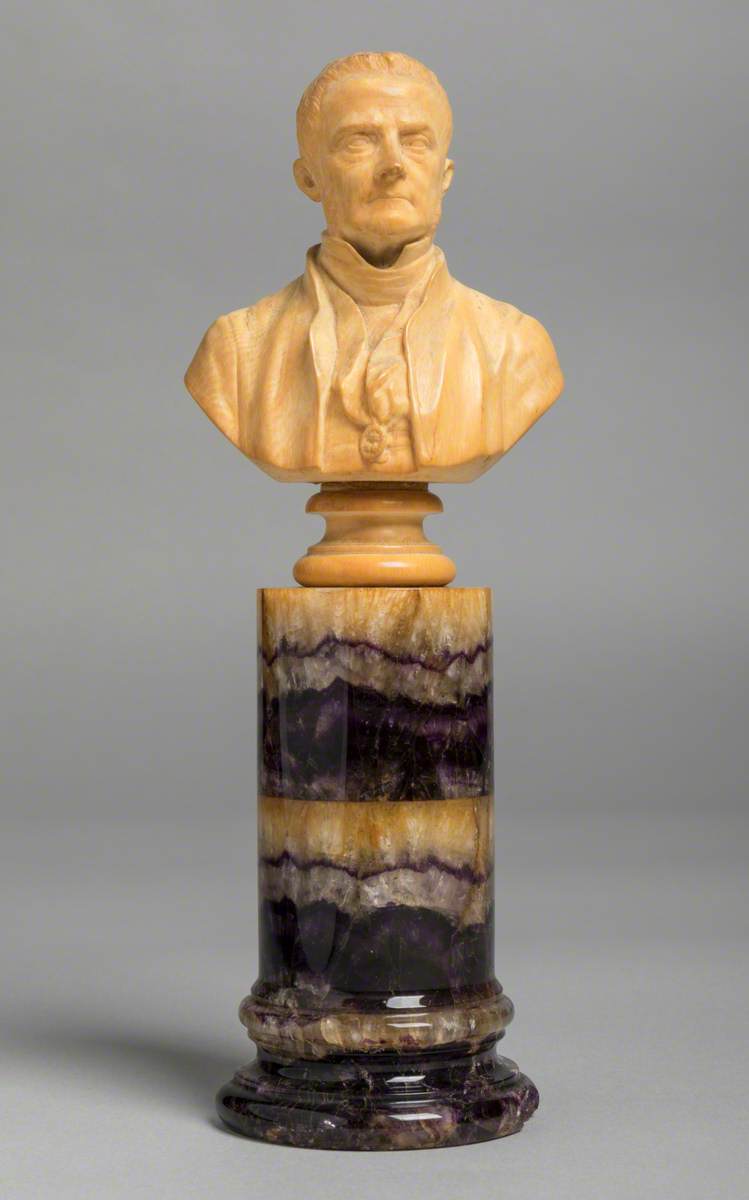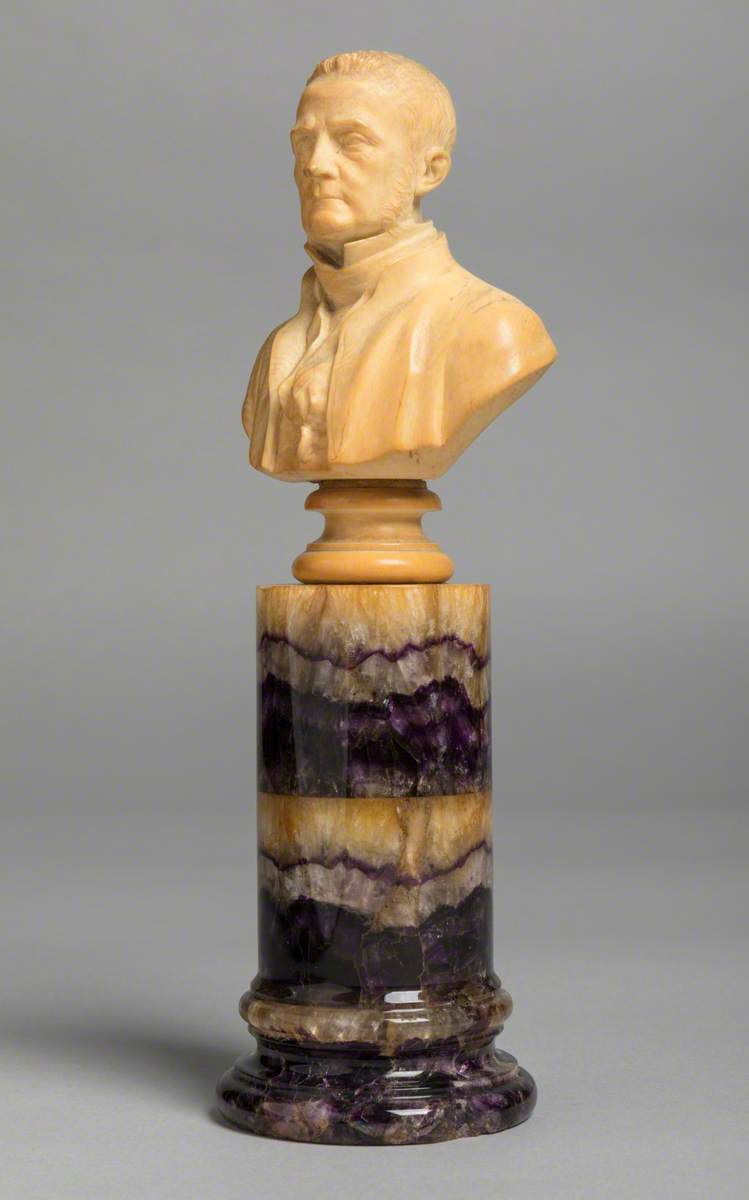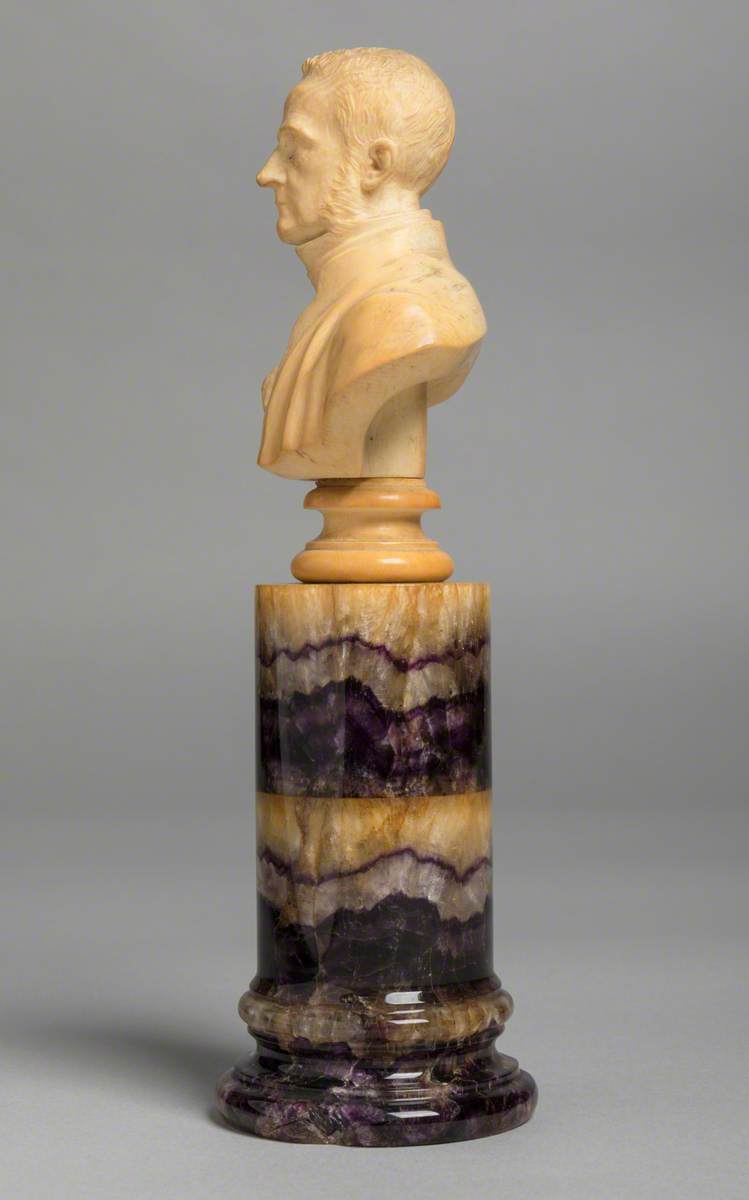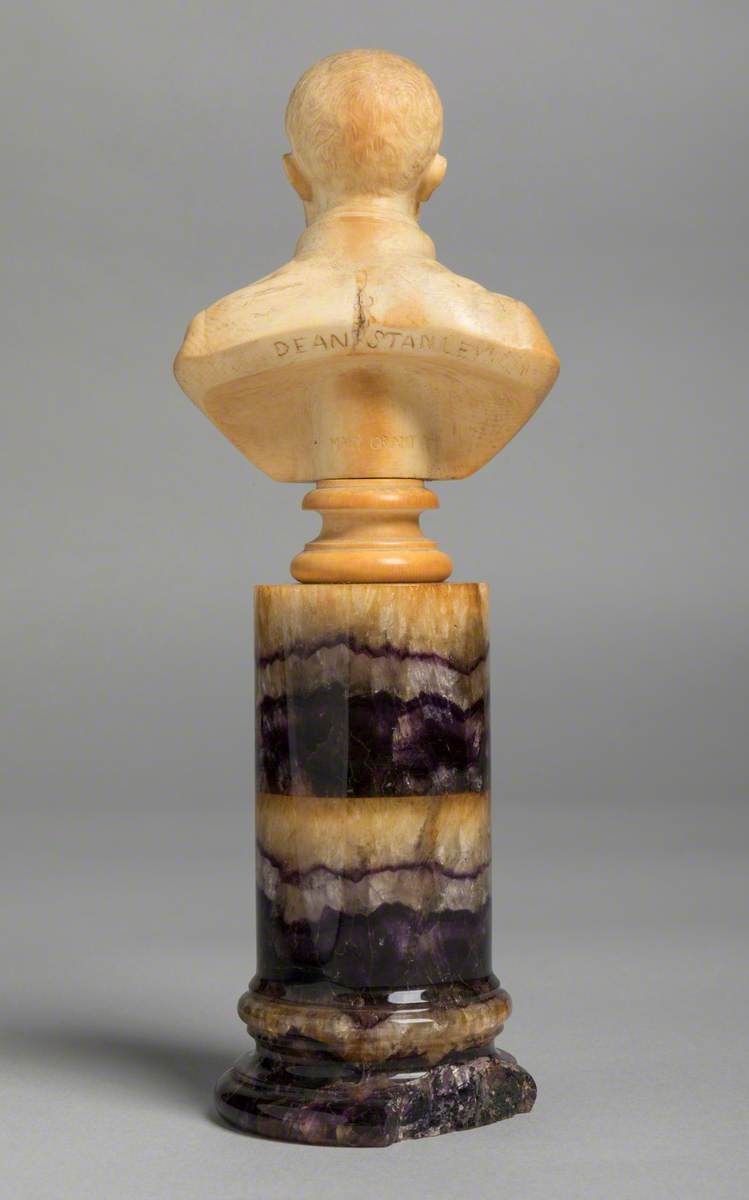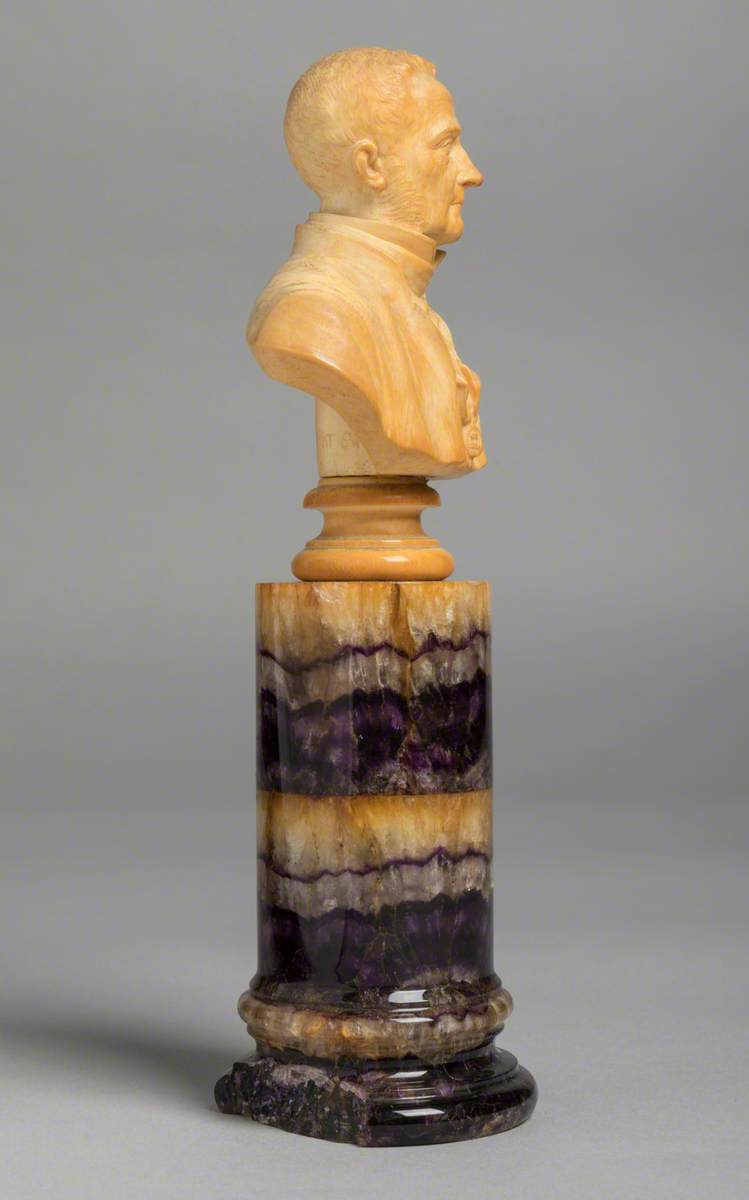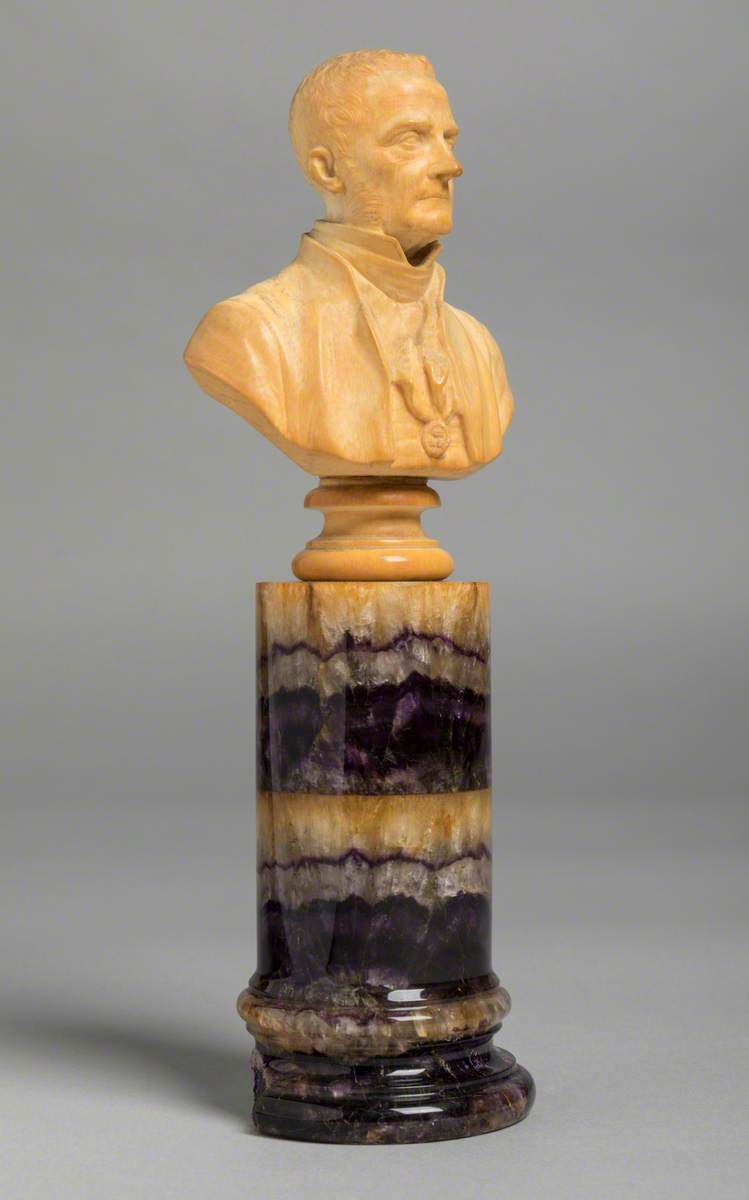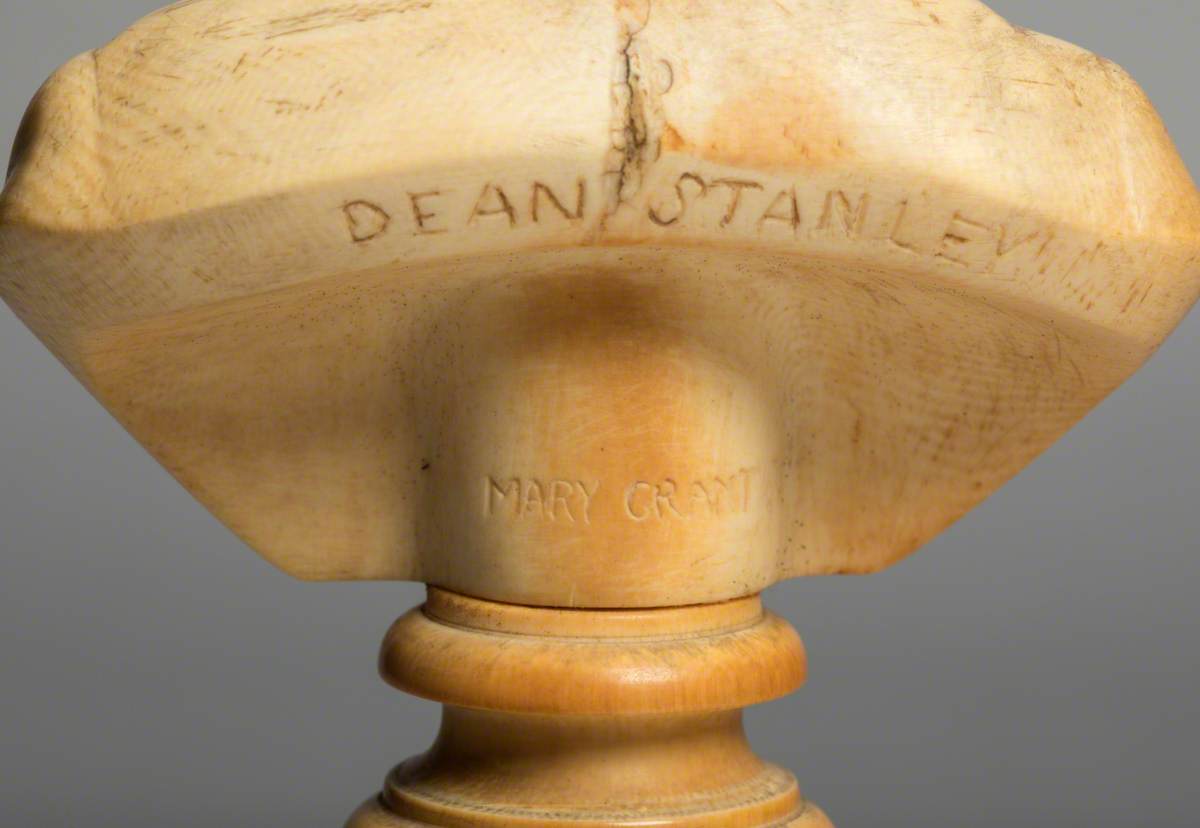How you can use this image
This image is available to be shared and re-used under the terms of the Creative Commons Attribution-NonCommercial licence (CC BY-NC).
This image can be reproduced in any way apart from any commercial uses.
Wherever you reproduce the image or an altered version of it, you must attribute the original creators (acknowledge the original artist(s), the person/organisation that took the photograph of the work) and any other stated rights holders.
Review our guidance pages which explain how you can reuse images, how to credit an image and how to find more images in the public domain or with a Creative Commons licence available.
DownloadNotes
Add or edit a note on this artwork that only you can see. You can find notes again by going to the ‘Notes’ section of your account.
A bust carving in ivory of Arthur Penrhyn Stanley, Dean of Westminster, on a Blue John plinth. He was one of five children of the Right Reverend Edward Stanley, Bishop of Norwich. The Stanley family lived locally to Tabley House in neighbouring Alderley Edge and they would have known each other well. Dean Stanley was educated at Rugby and Balliol College, Oxford. Between 1856 and 1864 he was Regius Professor of Ecclesiastical History and Canon at Christ Church, Oxford. In 1864 he became Dean of Westminster, a post which he held until his death in 1881. In 1852 Stanley travelled to Egypt and Palestine and produced a bestselling account of his observations in 'Sinai and Palestine: In Connection with Their History', which is still being reprinted.
Mary Grant was one of the most eminent female sculptors of nineteenth-century Britain, with numerous commissions from the rich and famous.
Born in Kilgraston, Perthshire, Scotland, her maternal grandfather was the 7th Earl of Elgin, her aunt was Mary Anne Grant, a portrait and landscape painter, and her uncle was Sir Francis Grant, a highly successful portrait painter and president of the Royal Academy.
She began sculpting in the 1850s and studied in Florence under Odoardo Fantacchiotti in the early 1860s and with John Gibson in Rome. Grant then went to Paris and studied with Michel Mercier. She established a studio in London in the late 1860s and worked under the direction of John Foley in 1868–1869.
Blue John is a semi-precious mineral, a form of fluorite with bands of a purple-blue or yellowish colour. In the UK it is found only at Blue John Cavern and Treak Cliff Cavern at Castleton in Derbyshire. During the nineteenth century, it was mined for its ornamental value, and mining continues on a small scale.
Title
Arthur Penrhyn Stanley (1818–1881), Dean of Westminster
Date
1884 or before
Medium
ivory & Blue John
Measurements
H 22 x W 8.5 x D 5 cm
Accession number
98.13[B/A]
Acquisition method
transferred from the estate of the late John Leicester Warren to the University of Manchester, 1976
Work type
Bust
